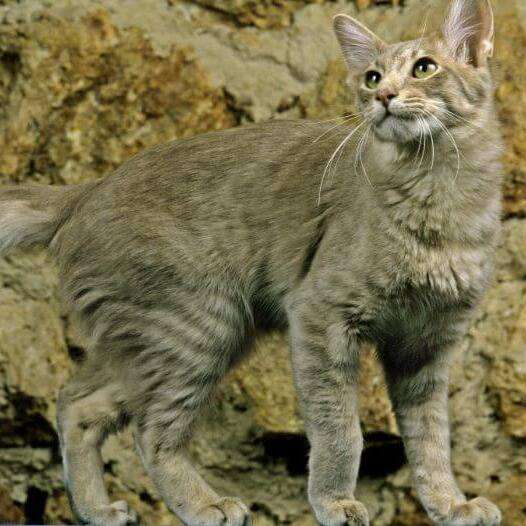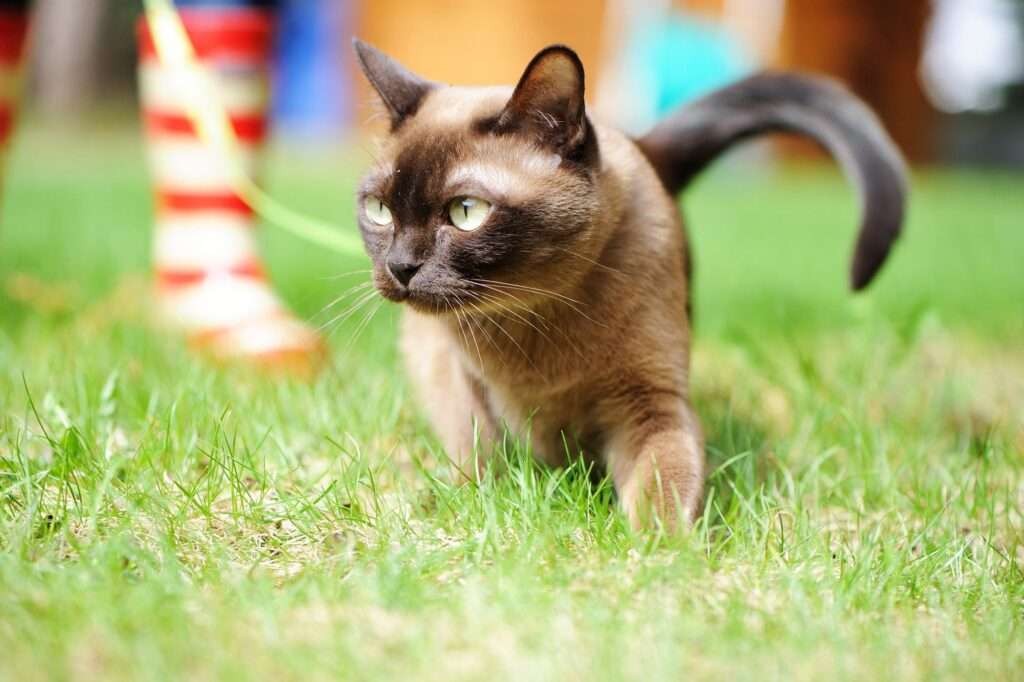
Description
Size: Male: 8-12 lbs. Female: small: <8 lbs.
With its triangular heads, big ears, and almond-shaped eyes, the oriental longhair has a similar appearance to the Siamese. The longhair, however, has a longer, plumed tail and an even leaner, more slender body.
The breed is renowned for its enormous variety of coat patterns and colors. The oriental longhair offers much more variability than any other breed, with the exception of its short-haired counterpart, with close to 300 varieties.
Origin and History
Oriental cats can be classified as having long or short hair, with short hair being far more prevalent. Although it is believed that an early form of the oriental longhair cat was created in Turkey in the 19th century, the widespread Persian cat eventually made the less well-known long-haired cat extinct.
Breeders sought to create Siamese-like cats in the middle of the 20th century with a wider range of coat hues and patterns. They started mating Siamese cats with Abyssinians, British shorthairs, and Russian blues. The oriental cat originated in this way, and by the 1970s, they were being transported to the United States, where they quickly gained enormous popularity.
The Cat Fanciers’ Association (CFA) did not yet recognise the longhair as a separate breed when it first recognized the oriental shorthair cat as a breed in 1977. The oriental longhair was recognized as a distinct breed by the International Cat Association (ICA) in 1979, but the CFA did not formally include the longhair in its roster until 1995.
Behavior
Activity Level: High to moderate
Social Needs: Oriental Longhairs are gregarious, occasionally demanding cats that enjoy having people around.
The oriental longhair has a lot of personality, just like its well-known ancestor the Siamese, and isn’t afraid to show it. These cats are vocal and want to converse with humans. Despite their high levels of sociability, they generally avoid becoming hostile or even overly unpleasant due to their pleasant disposition.
They enjoy playing games, especially with their housemates, because they are curious and energetic.
As Pet

Grooming
Despite having long hair, the oriental longhair does not require the extensive grooming as longer-haired breeds like the Persian do since it does not have a double coat. To remove dead hairs, a thorough brush-out once a week should be sufficient.
Diet and Nutrition
The breed is predisposed to periodontal disease, probably as a result of the long, narrow face and jaw that allow germs and plaque to build up. To aid in the removal of build-up, it is crucial to offer high-quality food, ideally dry food in addition to canned food. Veterinary dental cleanings and tooth brushing, if your cat tolerates it, can both be helpful.
Exercise
Due to its high level of energy, the oriental longhair enjoys playing games, exploring, and tackling toys. Training is a wonderful method to interact with this inquisitive cat (and keep its mind occupied). This breed of cat is remarkably trainable in the context of cats. The longhair responds well to positive reinforcement training techniques and is highly intelligent and curious. This will keep your cat interested and stimulated while enhancing your relationship with it.
Table





